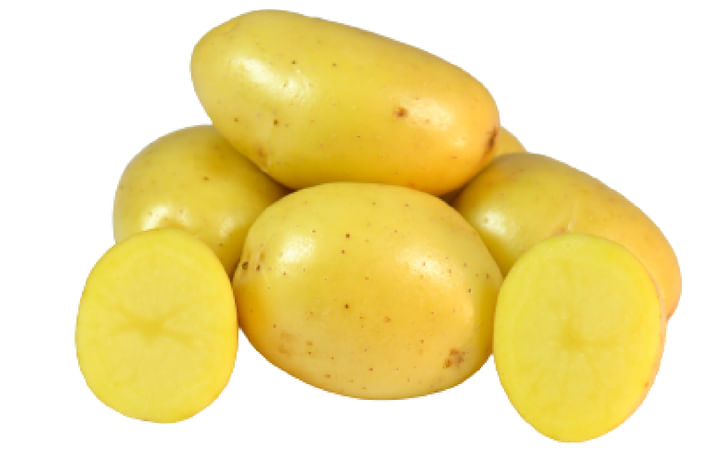General production advice ware potatoes
Pre-treatment and planting
- Gioconda has a long dormancy.
- Allow the seed to acclimatize to the local conditions before planting.
- Do not store the seed potatoes lower than 5°C. Warm them up sufficiently before planting.
- If an apical sprout is present, remove it and plant with small white buds.
- Seed should be removed from the cold store in time before planting.
- The best quality will be reached on fertile and medium heavy clay-soil types.
- Don't plant on light soils, to avoid long tubers.
- Gioconda has a good tolerance to Rhizoctonia.
- Plant large seed deeper to avoid greening.
- Take care of a good volume ridge to prevent green tubers.
Growing attention points
- Emergence is somewhat slow, later on foliage develops well.
- The use of metribuzin is recommended before emergence. When applying post emergence, use the low dose system.
- Weather conditions have a strong influence on metribuzin effectivity, adapt dose to the circumstances.
- Irrigation is advised under dry circumstances.
- Limit irrigation in second part of the season, to stimulate accumulation of dry matter.
- Too much irrigation late in the season increases the dominance of lenticels.
- Use a robust Phytophthora programme, to prevent foliage blight.
- Dry and hot conditions can result in heat sprouts.
Haulm killing and harvest
- Aim for a dry matter content of 18,5 %.
- Gioconda has a good tuber detachment.
- Ensure enough time between haulm killing and harvest to have a better skin set.
- Gioconda is moderately susceptible to bruising. Reduce drop heights and avoid mechanical damage.
Storage
- Gioconda has a good dormancy, therefore ambient storage can be used for the first months after harvest.
- For storage period longer than 5 months, refrigeration is required.
- Refrigerated storage
- Prevent dehydration, cool with a small difference between cooling air and product temperature.
- Reduce temperature 0,5 - 0,7 degrees a day, not lower than 4°C store temperature.
- Ventilate regularly, but briefly, to prevent CO2 accumulation.
- Any fluctuation in temperature, combined with condensation, can result in early sprouting and a high risk of Silver scurf.



